A INFLUÊNCIA DA VIBRAÇÃO NA OTIMIZAÇÃO DA TAXA DE PENETRAÇÃO EM POÇOS DE PETRÓLEO: UMA ANÁLISE BIBLIOMÉTRICA.
REGISTRO DOI: 10.5281/zenodo.7783500
Thales Rodrigues Barboza1
Diunay Zuliani Mantegazini2
Ronivaldo Ferreira da Silva3
Andreas Nascimento4
Abstract: This article presents a survey of publications that refer to the study of the influence of vibration on the rate of penetration (ROP) optimization in the petroleum industry. The Web of Science database was used for the research and a qualitative analysis was performed on the selected articles. In addition to the qualitative evaluation, a bibliometric analysis of citation and co-citation was performed using the CiteSpace software, verifying a network of collaborations. Among the 13 selected articles, it was observed that they were published in 11 different journals with an impact factor between 1,73 and 5,31. Teaching/research institutions in China were the ones that contributed the most to research related to the proposed theme, totaling 6. Of the 53 authors, only 3 authors are representatives of companies. The results show that the analyzed studies have sought to increase the ROP through physical changes in the downhole tools and through dynamic modeling that relate the drilling parameters.
Keywords: BHA, Vibration, Mechanical Specific Energy, ROP, Web of Science database.
Resumo: Este artigo apresenta um levantamento de publicações que se referem ao estudo da influência da vibração na otimização da taxa de penetração (ROP) na indústria do petróleo. A base de dados Web of Science foi utilizada para a pesquisa e uma análise qualitativa foi realizada nos artigos selecionados. Além da avaliação qualitativa, foi realizada análise bibliométrica de citação e cocriação por meio do software CiteSpace, verificando uma rede de colaborações. Dentre os 13 artigos selecionados, observou-se que foram publicados em 11 periódicos diferentes com fator de impacto entre 1,73 e 5,31. As instituições de ensino/pesquisa da China foram as que mais contribuíram com pesquisas relacionadas ao tema proposto, totalizando 6. Dos 53 autores, apenas 3 autores são representantes de empresas. Os resultados mostram que os estudos analisados têm buscado aumentar a ROP por meio de mudanças físicas nas ferramentas de fundo de poço e por meio de modelagem dinâmica que relacionam os parâmetros de perfuração.
Palavras-chave: BHA, Vibração, Energia Mecânica Específica, ROP, banco de dados Web of Science.
1. Introduction
The drilling process is considered one of the most expensive and dangerous activities in oil and gas exploration. The search for the drilling processes optimization in reservoirs located at great depths (pre-salt) has generated a technological competition in order to increase in efficiency accompanied by a cost reduction. Part of the high cost is related to the unwanted vibrations that the drill string suffers (Barboza and Freitas, 2019).
The vibration optimization and mechanical specific energy (MSE) can give excellent answers to the operator when described and analyzed correctly. According to Pinheiro et al. (2019), the drilling processes in adverse conditions can exceed the cost of US$1 million.day-1, due to downtime and/or maintenance required during drilling activities (Nascimento, 2016).
For an optimization process, it is necessary to obtain parameters that serve for comparison to perform an analysis of the data obtained. The process can be directly related to the vibrations obtained during well drilling. The vibrations can compromise the quality of the drilling performance, limiting the related equipment useful life, increasing the mechanical specific energy, and, as a consequence, decreasing the productivity of the tools in use (Zhu et al., 2014).
The consequences of these vibrations include impact and friction at the well/drill string and drill-bit/rock, instability, eccentricity or initial curvature in the drill collar sections, as well as various linear or non-linear resonances. Measurements of these vibrations can provide valuable information about the drill set and formation characteristics. Therefore, the vibration must be fully understood and its effects must be minimized linked to approaches aiming at optimizing the rate of penetration (Ahmadian et al., 2007; Zhu et al., 2014).
More comprehensively, the main problems caused by vibration can be: premature wear and damage to the drilling equipment, resulting in fatigue and inducing failures; mechanical overload, decreasing rate of penetration (ROP), increasing the final operating costs of the drill-drill-bit, the interference in measurements performed during the drilling process and the damage to the measuring equipment, substantial waste of mechanical specific energy (MSE), instability of bottom-hole assembly (BHA) and reduced directional control, stress corrosion cracking (SCC), resulting in cracking of screw connections, breakage of drill pipes, weakening of the drill-bit and damage to downhole tools (Márquez et al., 2015).
The main vibrations associated with oil well drilling are torsional, axial, and lateral vibrations (Zhu et al., 2014). According to Márquez et al. (2015) torsional vibration appears due to downhole conditions, such as significant drag, tight bore and formation characteristics. It occurs when the drill-bit is stopped in the formation while the rotary table continues to rotate. Torsional vibrations are the most detrimental mode of vibration that occurs most frequently and acts with typical frequencies of less than 2 Hz. The axial vibration of the drill string is the result of a repetitive loss of contact between the drill-bit and the drilling surface (drill-bit kickback phenomenon), it’s usually induced by torsional drilling oscillations, having typical frequencies between 1 and 10 Hz. Lateral vibration is found when the vortex phenomenon occurs, which is a lateral instability characterized by impacts between the drill string and the well with typical frequencies between 10 and 50 Hz.
In all this context, it is fair to mention that downhole tools, while drilling, continuously experience shock and vibration with some unavoidable events (Finnie & Bailey, 1960). All these events influence compromising the well and increasing the MSE. Thus, this specific paper consists in verifying articles published in the Web of Science database in an international perspective, that covers research the topic of vibration analysis aiming at improving ROP and decreasing MSE.
2. Methodology
The methodology is based on the study of research principles through bibliometric analysis, using methods to search for articles that are directly linked to the optimization of ROP with a focus on vibration.
The bibliometric analysis is a rigorous and popular method in the academic environment to explore and analyze scientific data from the most diverse topics. It clearly demonstrates the work developed on a specific topic. Its application is still considered new and is still under development. It has two main objectives: (1) to deal with large volumes of scientific data, and (2) to produce high impact research (Donthu et al., 2021).
The article is based on exploratory and descriptive research to determine or characterize the nature of the variables that want to know and seeks to discover how often a phenomenon occurs, its nature, causes, relationships and connections with other phenomena (Barros and Lehfeld, 2000; Köche, 2015).
In Figure 1, it is presented the steps performed to reach the final considerations in the analysis, they were carried out according to Barboza and Freitas (2019), and each step will be presented in the next sections.
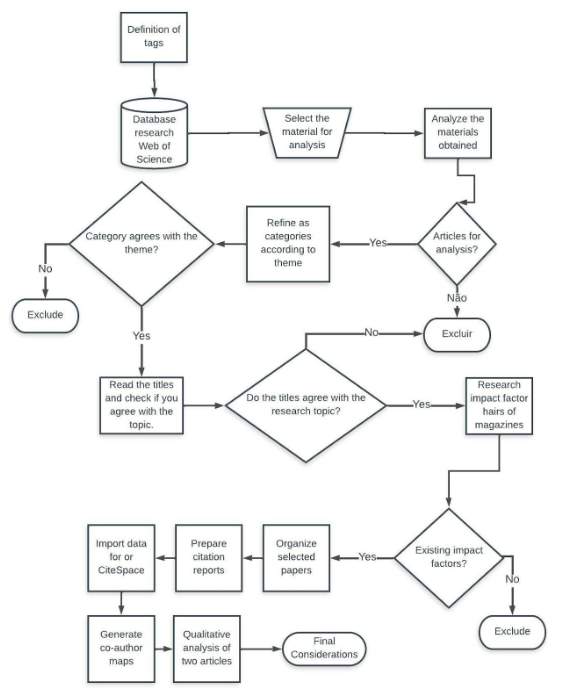
Figure 1. Flowchart of the process of obtaining data for final analysis. Source: Adapted from Barboza and Freitas (2019).
The flowchart, presented by Figure 1, was used as a guide to achieving the objectives of this study and serves as a detailed parameter of the decisions imposed in the article and the means used to obtain a valid portfolio. For this analysis, only the Web of Science was used as a database, suggesting that other research can be performed using different databases.
2.1 Target definition and database Search
The bibliometric research with the theme “The influence of vibration on the rate of penetration optimization in oil wells” started with the choice of the database that restricts the sample of articles to be considered during the process. To conduct the search for relevant articles, the researchers utilized the Web of Science database due to its comprehensive coverage of highly cited journals across various disciplines. This database also serves as a citation index, providing information on the articles that have cited a given paper and those that have been cited by it. With over 9,000 indexed journals, the Web of Science database is an essential tool for identifying high-quality, influential research articles (Clarivate, 2022).
Considering the time-frame between the years of 2010 and 2022, three main keywords were defined to search for the most significant number of articles related to the topic in reference. The words were placed on the website, and “vibration” should be in the title of the articles, as this is the focus point of this analysis, “optimization” and “drilling” were within the topic, which is when the word can be found in the title, abstract or keyword, which allows a broader search of the subject.
After defining the database and choosing the keywords, it was possible to survey the articles to be analyzed to achieve the proposed objectives of the presented studies.
3. Results and discussion
3.1. Selection of materials for portfolio composition
The selection of materials followed the same steps demonstrated by Barboza and Freitas (2019). After defining the keywords and considering the temporal variation of the publications between the years 2010 and 2022, the Web of Science database returned about 93 files for analysis, with the first publication occurring in July of 2010. It is worth mentioning that only the publication dates in the journals will be considered, if any article has been presented at a congress with an earlier date, this date will not be considered.
After the searches made considering the defined keywords, a small selection was realized, which only selected publications of articles from the Web of Science database, since in the first search, all types of publications were filtered. After performing the refinement that separated the articles only for analysis, it was found that 20 of these publications were not articles and were removed from the portfolio, leaving only 73 publications.
After choosing to analyze only articles, it was decided to verify the categories arranged in the database, and it was found that the categories Engineering Biomedical (3), Mining Mineral Processing (2), Operations Research Management Science (1), Acoustits (5), Materials Science Composites (2), Computer Science Interdisciplinary Applications (1), do not match the theme of this work, therefore, they were removed. All other categories were in accordance with the proposed theme, as follows: Automation Control Systems, Chemistry Multidisciplinary, Energy Fuels, Engineering Chemical, Engineering Geological, Engineering Industrial, Engineering Manufacturing, Engineering Mechanical, Engineering Multidisciplinary, Engineering Petroleum, Environmental Sciences, Geochemistry Geophysics, Geosciences Multidisciplinary, Instruments Instrumentation, Materials Science Multidisciplinary, Mathematics, Multidisciplinary Sciences, Physics Applied. Soon the 59 articles remained to be analyzed.
With the reading of the titles, it was observed that 46 titles were outside the scope of the work, so they were removed, remaining only 23 articles. For the final analysis of the portfolio, it was chosed to evaluate articles that were only published in journals with an impact factor, which were published through the JCR platform (Journal Citation Report). After this analysis, it was observed that three journals had no impact factor (FUENTES EL REVENTION ENERGETICO, BULLETIN OF THE TOMSK POLYTECHNIC UNIVERSITY-GEO ASSETS ENGINEERING, JOURNAL OF ENGINEERING-JOE). Therefore, 13 articles remained for analysis at the end of the filtering process (Table 1).
Table 1. List of articles selected for the portfolio. Adapted from: Web of Science.
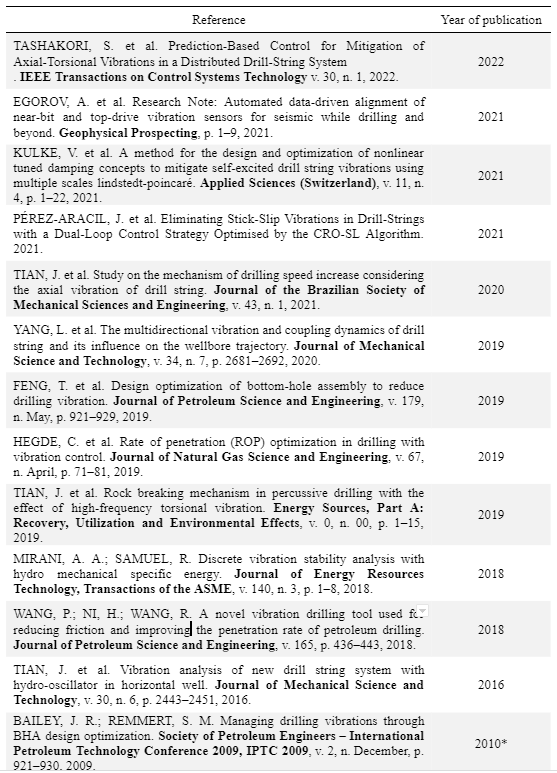
*Date it was published in the journal (SPE DRILLING & COMPLETION).
The table 1 presents the references that are part of the final analysis portfolio. This portfolio consists of 13 articles in line with the topic. To achieve this result, it is necessary to follow all the steps applied so far correctly, otherwise, it is not possible to reach the same result.
3.2. Bibliometric Analysis
The bibliometric analysis of the articles selected to compose the theoretical reference portfolio was divided into two parts: (1) a citation report and (2) a qualitative analysis of the selected articles.
The Citation Report presents the list of articles, number of publications, number of citations per year, countries, journals that publish the most, impact factors, and categories chosen in the Web of Sciences.
The qualitative analysis shows what the authors report on the subject, and the degree of importance of studies realized.
3.2.1. Citation Report
In this section, several aspects that relate in a macro way to the articles selected for the analysis are presented below.
Table 2 shows the relationship between articles and the number of citations, with a total of 86 citations with an average of 6.61 citations per article. The list is based on articles published from 2010 to December 2021. These articles were arranged in descending order, showing the article with the highest number of citations to the lowest number.
Table 2. List of articles with the number of citations, ordered by citations. Adapted from: Web of Science.
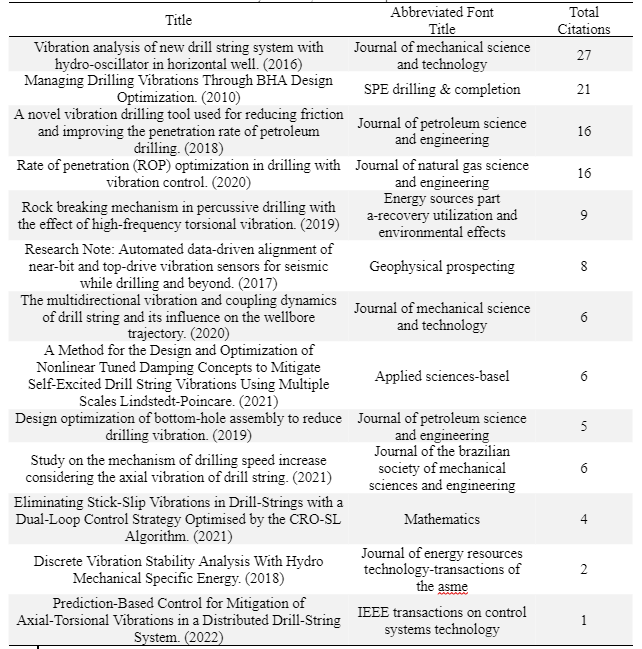
Observing the academic relevance of the articles, in terms of publications per year, it is observed that among the 13 articles analyzed, the publication of the 1st article with a focus on keywords appeared in 2010. It is clear that from 2010 to the present date, 2022, the number of publications related to the topic is well below, basically, one publication per year, demonstrating that the scientific approach is very timid, and indicating a theme that has not been much under study, which creates opportunities for future research.
Another analysis performed was using the number of citations of the articles selected for study (Figure 2) according to the year. It appears that the first citation occurred in 2011, corresponding to the article published in 2010. It is observed that the peak of citations occurred in the year 2022. The growth can be explained by the race in the search for ROP optimization, seeking ways to reduce vibrations from drilling, therefore, with an increase in research related to the topic, increases the probability of articles being cited.
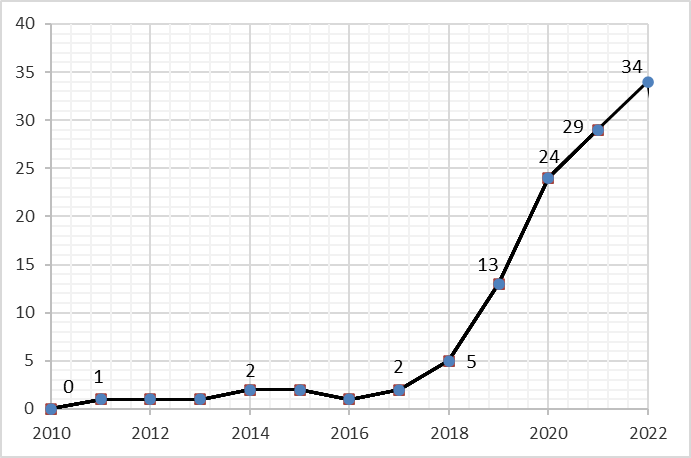
Figure 2. Number of citations per year. Adapted from: Web of Science.
In Figure 3, it is possible to observe the location of the institutions where the authors belong, as there are 13 articles and a greater number are presented, this is due to the fact that an article is published by more than one researcher in institutions in different countries. Therefore, authors representing teaching/research institutions in China correspond with the most significant number of publications, with approximately 62% compared to authors living in other countries.
It can be observed that the Brazilian authors do not present any publication among the selected articles and that the article does not present studies carried out in Brazil or Angola, countries considered strong in the drilling of oil wells, possibly due to the lack of public/private investment in universities and institutes and the availability of real data for a better understanding of the behavior of vibrations. It is important to remember that the research was carried out only with the Web of Science database, which limited the number of articles analyzed.
The count is made only by the appearance of a country, for example: the article “The multidirectional vibration and coupling dynamics of drill string and its influence on the wellbore trajectory” has 6 authors, 5 from China and 1 from Canada, so it will be accounted for only 1 China and 1 Canada.
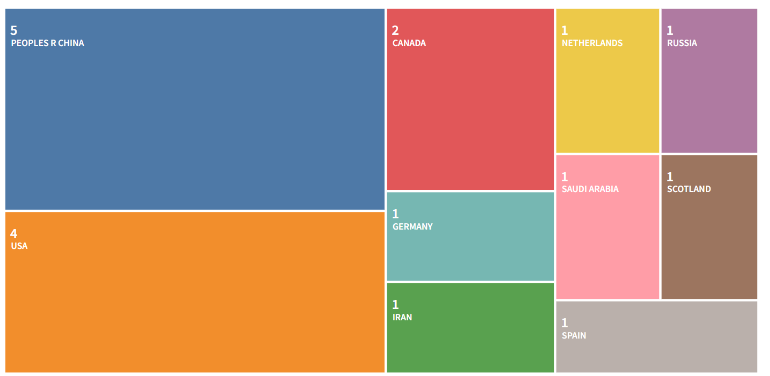
Figure 3. List of countries of the authors of publications. Source: Web of Science.
In Table 3 it is possible to verify that most of the published articles are from researchers linked to teaching and research institutions and only 3 authors are from companies such as Halliburton, ExxonMobil and RasGas. Demonstrating that most studies are concentrated in the scientific area.
Table 3 – List of articles with the authors and their links, in alphabetical order of the articles.
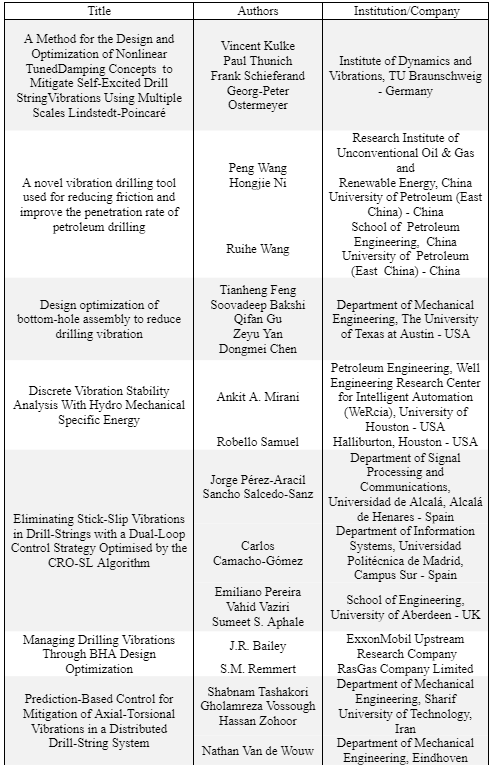
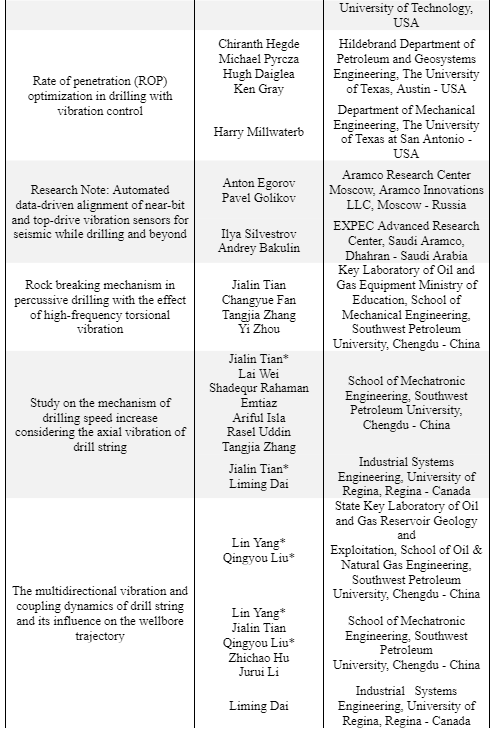
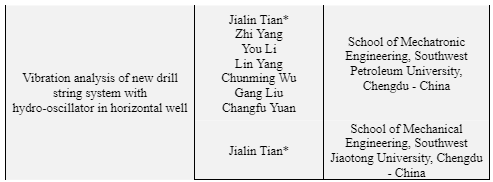
* Authors representing two departments.
In Figure 4, it is possible to observe the number of articles published in the journals, demonstrating the range and opportunity where it is possible to perform the submission of articles on the topic
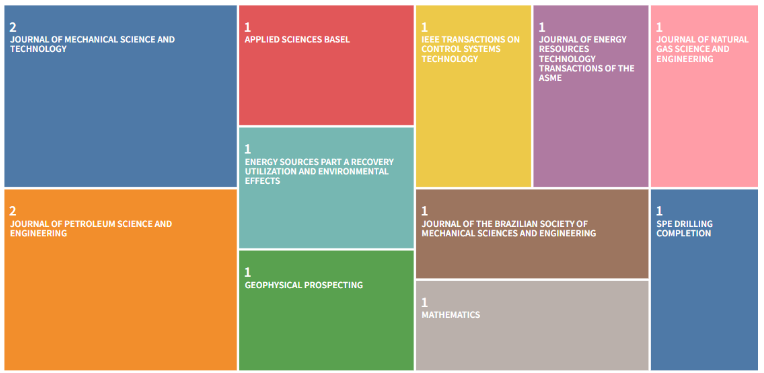
Figure 4. Number of articles published in each journal. Source: Web of Science.
Figure 5 shows an evaluation of the impact factor, which is a helpful tool for evaluating scientific journals and intellectual productivity (Portugal et al., 2011). It is worth mentioning that the impact factor is only valid until the research date. It is observed that the journal “IEEE TRANSACTIONS ON CONTROL SYSTEMS TECHNOLOGY” has a more significant impact factor when compared to other journals listed. The journal aims to provide publications that bridge the gap between theory and practice by focusing on state-of-the-art advances in the design, realization and operation of control systems.
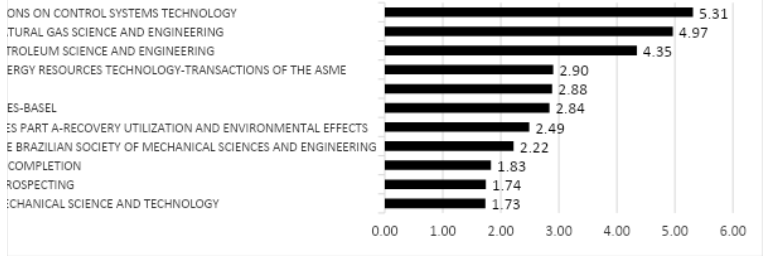
Figure 5. Impact factor of journals. Adapted from: Web of Science.
Figure 6 shows the number of articles published by categories. Such categories are determined by the Web of Science. It appears that the category with the highest number of published articles is Energy Fuels, representing 5 articles among the 13 selected articles, which is in line with the proposal of this work. It is worth mentioning that an article can belong to more than one category.
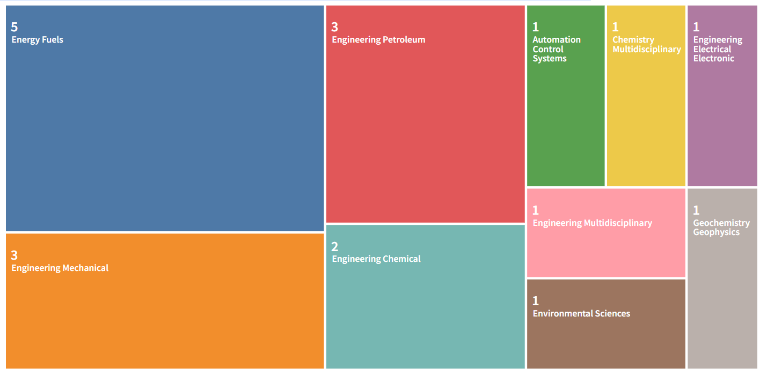
Figure 6 – Number of articles published by Web of Science category. Source: Web of Science.
An analysis in the Cite Space software was realized to verify the co-citation network between the authors of the articles in the sample. Figure 7 shows a network with 89 nodes (references), and 260 co-citation links divided into 20 clusters with a modulus of 0.0,8352, indicating that the network is reasonably divided into loosely coupled clusters. The density was 0.0664, indicating that approximately 7% of all possible connections were established, which shows little connection between the authors of the 13 articles.
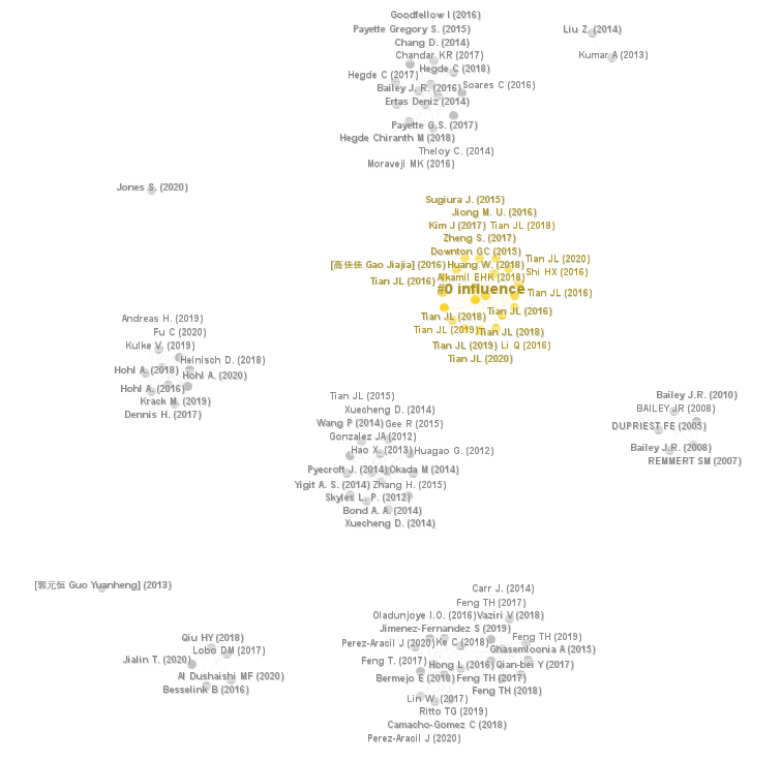
Figure 7. An overview of co-citation networks. Source: Created by the authors on Citespace.
To obtain a more detailed analysis of the research, the abstracts of the thirteen selected articles were read and two tables were created that relate whether the data used were real or just experimental and whether the research addresses a change in the design of the BHA or some new tool (Table 3) or algorithms for ROP optimization (Table 4).
Table 4 Articles with studies related to BHA modification, ordered by year.
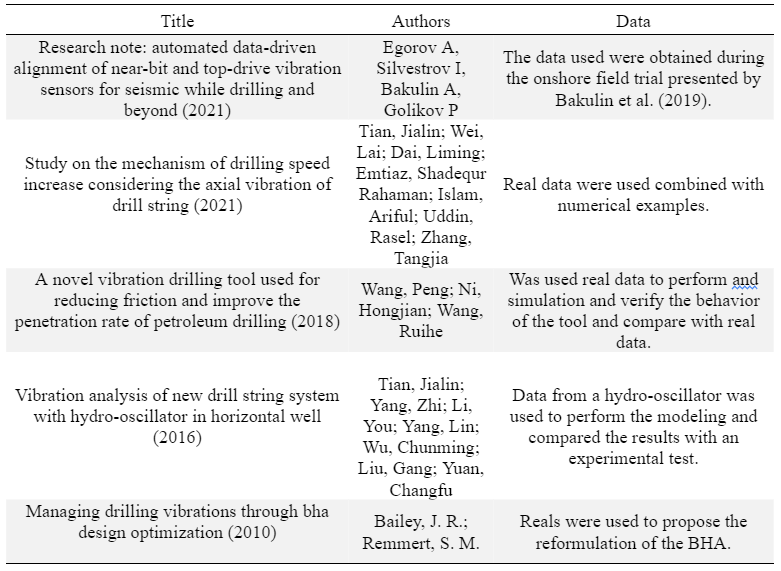
It can be seen in Table 4 that of the 13 articles analyzed, 5 belong to Group 1, representing about 38% of the articles in the final portfolio. Table 5 shows that 8 belong to Group 2, representing about 62% of the items in the final portfolio.
Table 5. Articles with studies related to the use of algorithms.
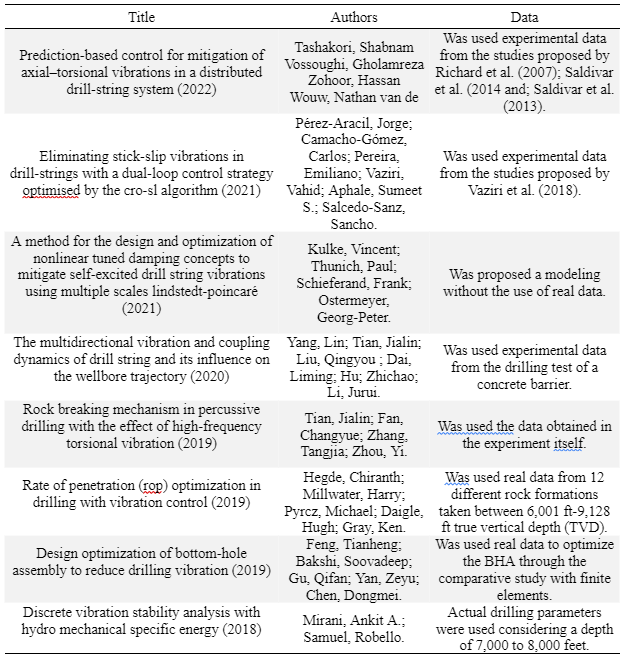
3.2.2. Qualitative Portfolio Analysis
The objective of this section is to present a summary of the articles in the portfolio, verifying the research that the authors have realized and that contributes to the understanding of the topic.
Egorov et al. (2021) introduced a cutting-edge two-step alignment technique. The method utilizes a Global Positioning System-synchronized top-drive vibration sensor as a reference point. This new alignment procedure meets the strictest standards for accuracy in seismic drilling. The first step calculates the delay time and linear drift through global optimization. The second step determines nonlinear drift by using time-variant cross-correlation. A field test showed that the proposed approach effectively aligns top-drive and downhole data using a completely unsynchronized near-bit vibration dataset. The result is improved correlated seismic data, thanks to the aligned near-bit sensor serving as a usable guide for seismic-while-drilling processing, which outperforms the results obtained using just the top-drive surface pilot.
Tian et al. (2021) introduced a way of incorporating the BHA and drill string as a whole to assess the axial vibration of the drill string, enhance the rate of penetration (ROP), and create a model of the axial vibration in horizontal wells. They achieved this by determining the equation of microelement movement. To validate the effectiveness of the tool and the accuracy of the proposed method, the authors examined the operating mechanism of the tool, the overflow area, pressure drop, and axial force of the disc valve system to determine the pattern of the axial force variation. The findings showed that the new vibration tool can be put into use at drilling sites, resulting in improved ROP and efficiency, decreased drilling costs, and ensuring the safety and reliability of the drilling process.
Wang et al. (2018) created a new self-resonating oscillator to decrease the friction between the drill-pipe and borehole wall, thereby increasing the rate of penetration (ROP). They constructed an engineering prototype based on their research and site conditions. The prototype was tested in the field and compared to the actual drilling data of nearby wells in the same formation and interval. The results of these tests serve as a valuable guide for future drilling efforts.
Tian et al. (2016) presented a new hydro-oscillator and verified its impact on the harmonic axial force. With this information, they established a vibration analysis model for a new drill string system and analyzed its vibration behavior in horizontal wells. The study concluded that using the new hydro-oscillator to smooth vibrations could reduce friction in the drilling process and greatly enhance the rate of penetration (ROP).
Bailey and Remmert (2010) introduced modifications to the bottom hole assembly (BHA) to control the vibrations that occur during drilling. These modifications resulted in reduced tool damage, with improvements in the rate of penetration (ROP) of up to 36%. The first case study demonstrated the impact of using roller reamers and stabilizers in a BHA project on BHA dynamics and drilling performance. The second case study contrasted two sets of rotary steering. The first set failed twice due to excessive lateral vibrations, stick/slip, and mechanical specific energy (MSE), while the second set drilled nearly 5,000 feet successfully, hitting all targets. Model results indicated that the second configuration had significantly lower lateral bending indices. The third case study found that the model and field drilling data both indicated a rotational speed “sweet spot” for the BHA close to 90 RPM.
Pérez-aracil et al. (2021) proposed a two-part control strategy. The inner loop is designed to dampen system vibrations and eliminate limit cycles caused by nonlinear friction, while the outer loop quickly achieves the desired velocity. The optimal settings for the control parameters were determined using the Coral Reefs Optimization algorithm with Substrate Layer (CRO-SL), a multi-method ensemble meta-heuristic that combines various search techniques within a single population to yield a robust and efficient solution for complex optimization problems.
An example application of the proposed dual-loop control strategy, using a real-life nonlinear dynamics model of a drill string, showed that the controller optimized by the Coral Reefs Optimization algorithm with Substrate Layer (CRO-SL) outperformed in several key areas. The controller effectively cancelled stick-slip vibrations, had a fast time response, was robust to changes in system parameters, and prevented chattering. (Pérez-aracil et al., 2021).
Kulke et al. (2021) analyzed the design and effectiveness of two nonlinear passive damper concepts for reducing high-frequency torsional oscillations in the drill string. A finite element model of the drill string was used to create a simplified model and analyze it using the Multiple Scales Lindstedt-Poincaré method. This analysis revealed the impact of various parameters and allowed for the development of design equations. The findings were then tested through time-domain simulations of the drill string model, which showed that the MSLP method produced very positive results due to the frequency-dependent nature of the self-excited structure.
Yang et al. (2020) aimed to enhance the precision of predicting wellbore trajectory, especially in the starting section, through a proposed interrelated model for longitudinal, torsional, and radial dynamics of the drill string. The authors solved the coupled dynamics model using the energy method and computed the torque, weight on bit (WOB), longitudinal displacement and velocity, torsional angular displacement, and angular velocity of the drill bit during normal drilling and stick-slip vibration phases. The numerical example and experimental test were used to compare and analyze the differences between the proposed model and other models, and actual drilling trajectories. The study found that torsional and longitudinal vibrations significantly impact each other in the coupled model, resulting in an increase in longitudinal vibration displacement, which can significantly reduce the torque variation range of torsional vibrations.
The research conducted by Tian et al. (2019) aimed to enhance the rate of penetration (ROP) in deep-lying formations through the use of a polycrystalline diamond compact (PDC) drill-bit and high-frequency torsional vibration. The results showed that the optimal ROP was achieved when the frequency of the vibration was in close proximity to the natural frequency of the rock. This discovery improved the drilling conditions and overall tool performance.
In their research, Hegde et al. (2019) combined the process of optimizing the rate of penetration (ROP) with a machine learning-based vibration model. The model aimed to not only boost ROP but also reduce excessive vibrations. An optimization algorithm was employed to identify the ideal drilling control parameters, weight on bit (WOB), and revolutions per minute (RPM), that would enhance ROP ahead of the drill-bit. Evaluation of the model using field data demonstrated that, on average, the ROP was improved by 14.1% across all formations in comparison to the recorded data.
Feng et al. (2019) aimed to optimize the design of the bottom hole assembly (BHA) to make it more resistant to vibrations. To achieve this, a comprehensive BHA model was established using the finite element method (FEM) that considered the influence of the weight on bit (WOB) and contact between stabilizers and the wellbore on buckling. The FEM model was then utilized to calculate vibration indices, including the BHA strain energy and stabilizer side force, to assess BHA vibration.
The non-convex problem was tackled using the derivative-free genetic algorithm (GA) with parallel computation for acceleration. The finite element analysis of a BHA was performed to verify the model, and the results were compared to analytical solutions and previous studies, demonstrating good agreement. The redesigned BHA showed a considerable reduction in strain energy and stabilizer side force compared to the original design, resulting in improved dynamic performance and reduced drilling vibration (Feng et al., 2019).
Mirani and Samuel (2018) created an algorithm designed to control drilling vibrations while predicting the wear on the drill teeth in real-time. The goal of this algorithm was to optimize the drilling parameters that govern the rate of penetration (ROP) in real-time, so as to prevent downtime during drilling operations. The algorithm incorporated lateral vibration, torsional vibration, wear, and drill-bit performance, using revolutions per minute (RPM) and weight on bit (WOB) as parameters.
In their recent publication, Tashakori et al. (2022) proposed a control method to stabilize the axial and torsional dynamics of a drill-string system. The researchers developed a mathematical model that considers the vibrational dynamics of the drill string, including the cutting process, frictional contact effects, and top-side boundary conditions for axial and torsional actuation. The stability and stabilizability of the model were analyzed to guide the design of a state-feedback controller and predictor using an optimization-based pole-placement technique. The efficacy of the proposed control approach was demonstrated through a case study, indicating its robustness to parametric uncertainty in the bit-rock interaction and measurement noise.
Therefore, in Table 6 it is presented a SWOT Matrix, a widespread tool to perform scenario analyses, used as a basis for the management and strategic planning of an organization (Baumotte, 2021). The SWOT matrix presents the strengths and weaknesses, opportunities and threats.
Table 6. SWOT matrix prepared based on the analyzes observed in the articles
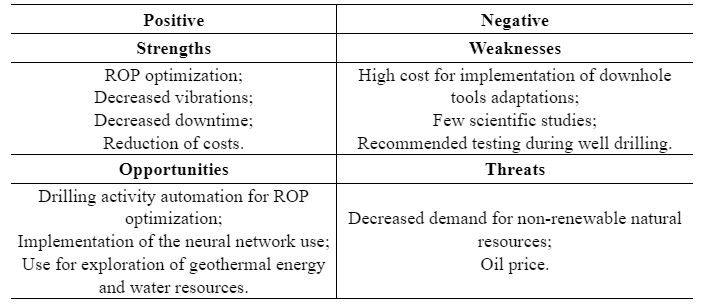
According to Table 5, the study takes directions that can help the researcher in the search for new ideas, novelties and innovations in this specific field. The table shows points that show the importance of the proposed research of this paper, since, by developing more research on the topic, it is be possible to obtain a new parameter for increasing ROP and decreasing MSE with the help of existing vibrations during the drilling phase.
4. Conclusion
Using the bibliometric review technique, it was possible to gather articles to be used in future research that report the topic addressed when the subject is ROP optimization through vibrations, taking into account also the MSE. This article will serve as a support for future research and will collaborate with other researchers to deepen within the proposed topic in a global perspective.
Using the Web of Science database, it was possible to apply all methodological procedures to obtain a well detailed analyses of the articles, developing a bibliometric review with the proposed theme “the influence of vibration on the rate of penetration optimization in oil wells”, from which it was possible to obtain 13 main articles, written by 53 authors and published in 11 different journals, for further deep research analysis.
It is observed that the research involving the theme of this review are well focused and very comprehensive, being developed in several aspects, demonstrating that the researchers hardly repeated the methodology, since each one approached the vibration in a different way, but always aiming at a scientific and technological development.
It was possible to verify that the number of citations is growing, from an average of 2 citations.year-1 (2010 to 2017) to 34 citations in 2022 alone, which represents the recognition of the importance of vibration for ROP optimization, even though it is not the central subject, but it is already gaining more notoriety in the academic environment.
Brazil, being internationally known as the Pre-salt reference country, has not yet published any article by the due date, this generates a certain preoccupation, since considering the discovery of new reservoirs, the focus on cost reduction becomes essential, therefore, the theme needs to be well understood. And in this context, it is fair to mention that one can trust and understand a specific scenario through science and further visibility for potential criticism and feedback.
It is observed that research still needs to be performed for a deep maturation of the theme. Therefore, future research is suggested, such as the use of laboratory benches, verification of vibrations in various types of rock, the implementation of artificial intelligence during drilling, and studies of the geometry of the drill-bits for the types of vibrations.
References
Ahmadian, H., Nazari, S. and Jalali, H. (2007) ‘Drillstring Vibration Modeling Including Coupling Effects’, IUST International Journal of Engineering Science, v. 18, n. 3, pp. 59–66.
Bailey, J.R. and Remmert, S.M. (2010) ‘Managing drilling vibrations through BHA design optimization’, Society of Petroleum Engineers – International Petroleum Technology Conference 2009, IPTC 2009, v. 2, pp. 921–930. <https://doi.org/10.2523/13349-ms>.
Barboza, T.R. and Freitas, R.R. de (2019) ‘Uma análise bibliométrica sobre os impactos do derramamento de petróleo na pesca marítima’, v. 8, n. 1, pp. 1–23. <https://doi.org/http://dx.doi.org/10.33448/rsd-v8i1.520>.
Barros, A.J. and Lehfeld, N.A. (2000) Fundamentos de metodologia científica: um guia para a iniciação científica. São Paulo: Pearson Makron Books.
Baumotte, A.C. (2021) 40 + 8 Ferramentas e Técnicas de Gerenciamento. 4a ed. Rio de Janeiro: BRASPORT Livros e Multimídia Ltda.
Clarivate (2022) Web of Science, <https://clarivate.com/webofsciencegroup/solutions/web-of-science/>. (accessed 12 January 2023).
Donthu, N. et al. (2021) ‘How to conduct a bibliometric analysis: An overview and guidelines’, Journal of Business Research, v. 133, pp. 285–296. <https://doi.org/10.1016/j.jbusres.2021.04.070>.
Egorov, A. et al. (2021) ‘Research Note: Automated data-driven alignment of near-bit and top-drive vibration sensors for seismic while drilling and beyond’, Geophysical Prospecting, pp. 1–9. <https://doi.org/10.1111/1365-2478.13119>.
Feng, T. et al. (2019) ‘Design optimization of bottom-hole assembly to reduce drilling vibration’, Journal of Petroleum Science and Engineering, v. 179, pp. 921–929. <https://doi.org/10.1016/j.petrol.2019.04.107>.
Finnie, I. and Bailey, J.. J. (1960) ‘An Experimental Study of Drill-String Vibration’, n. 59, pp. 129–135.
Hegde, C. et al. (2019) ‘Rate of penetration (ROP) optimization in drilling with vibration control’, Journal of Natural Gas Science and Engineering, v. 67, pp. 71–81. <https://doi.org/10.1016/j.jngse.2019.04.017>.
KÖCHE, J.C. (2015) Fundamentos de metodologia científica: teoria da ciência e iniciação à pesquisa. Petrópolis: Vozes.
Kulke, V. et al. (2021) ‘A method for the design and optimization of nonlinear tuned damping concepts to mitigate self-excited drill string vibrations using multiple scales lindstedt-poincaré’, Applied Sciences (Switzerland), v. 11, n. 4, pp. 1–22. <https://doi.org/10.3390/app11041559>.
Márquez, M.B.S. et al. (2015) Analysis and Control of Oilwell Drilling Vibrations. <https://doi.org/10.1007/978-3-319-15747-4>.
Mirani, A.A. and Samuel, R. (2018) ‘Discrete vibration stability analysis with hydromechanical specific energy’, Journal of Energy Resources Technology, Transactions of the ASME, v. 140, n. 3, pp. 1–8. <https://doi.org/10.1115/1.4037899>.
Nascimento, A (2016) “Mathematical Modeling for Drilling Optimization in Pre-salt Sections: a Focus on South Atlantic Ocean Operations”. Doctoral thesis, UNESP, Guaratinguetá.
Pérez-aracil, J. et al. (2021) ‘Eliminating Stick-Slip Vibrations in Drill-Strings with a Dual-Loop Control Strategy Optimised by the CRO-SL Algorithm’.
Portugal, M., Branca, S. and Rodrigues, M. (2011) ‘Dados de medida de fator de impacto das revistas científicas’, Revista de Enfermagem Referência, v. III Série, n. 5, pp. 211–215. <https://doi.org/10.12707/riii11ui4>.
Richard, T., Germay, C. and Detournay, E. (2007) ‘A simplified model to explore the root cause of stick-slip vibrations in drilling systems with drag bits’, Journal of Sound and Vibration, v. 305, n. 3, pp. 432–456. <https://doi.org/10.1016/j.jsv.2007.04.015>.
Saldivar, B. et al. (2013) Suppressing Axial-Torsional Coupled Vibrations in Drillstrings, CEAI.
Saldivar, B. et al. (2014) ‘Flatness-based control of torsional-axial coupled drilling vibrations’, in IFAC Proceedings Volumes (IFAC-PapersOnline). IFAC Secretariat, pp. 7324–7329. <https://doi.org/10.3182/20140824-6-za-1003.02205>.
Tashakori, S. et al. (2022) ‘Prediction-Based Control for Mitigation of Axial-Torsional Vibrations in a Distributed Drill-String System’, IEEE Transactions on Control Systems Technology, v. 30, n. 1, pp. 277–293. <https://doi.org/10.1109/TCST.2021.3065669>.
Tian, J. et al. (2016) ‘Vibration analysis of new drill string system with hydro-oscillator in horizontal well’, Journal of Mechanical Science and Technology, v. 30, n. 6, pp. 2443–2451. <https://doi.org/10.1007/s12206-016-0504-z>.
Tian, J. et al. (2019) ‘Rock breaking mechanism in percussive drilling with the effect of high-frequency torsional vibration’, Energy Sources, Part A: Recovery, Utilization and Environmental Effects, pp. 1–15. <https://doi.org/10.1080/15567036.2019.1650138>.
Tian, J. et al. (2021) ‘Study on the mechanism of drilling speed increase considering the axial vibration of drill string’, Journal of the Brazilian Society of Mechanical Sciences and Engineering, v. 43, n. 1. <https://doi.org/10.1007/s40430-020-02712-9>.
Wang, P., Ni, H. and Wang, R. (2018) ‘A novel vibration drilling tool used for reducing friction and improve the penetration rate of petroleum drilling’, Journal of Petroleum Science and Engineering, v. 165, pp. 436–443. <https://doi.org/10.1016/j.petrol.2018.02.053>.
Yang, L. et al. (2020) ‘The multidirectional vibration and coupling dynamics of drill string and its influence on the wellbore trajectory’, Journal of Mechanical Science and Technology, v. 34, n. 7, pp. 2681–2692. <https://doi.org/10.1007/s12206-020-0601-x>.
Zhu, X., Tang, L. and Yang, Q. (2014) ‘A literature review of approaches for stick-slip vibration suppression in oilwell drillstring’, Advances in Mechanical Engineering, v. 2014. <https://doi.org/10.1155/2014/967952>.
1Programa de Pós-graduação em Engenharia, Faculdade de Engenharia e Ciência de
Guaratinguetá Universidade Estadual Paulista UNESP.
https://orcid.org/0000-0002-4783-1106
2Programa de Pós-graduação em Engenharia, Faculdade de Engenharia e Ciência de
Guaratinguetá Universidade Estadual Paulista UNESP.
https://orcid.org/0000-0003-0606-5991
3Faculdade MULTIVIX
https://orcid.org/0009-0003-9298-1503
4Programa de Pós-graduação em Engenharia, Faculdade de Engenharia e Ciência de
Guaratinguetá Universidade Estadual Paulista UNESP.
Energy Group, Instituto de Engenharia Mecânica Universidade Federal de Itajub – UNIFEI.
https://orcid.org/0000-0002-4465-5450
